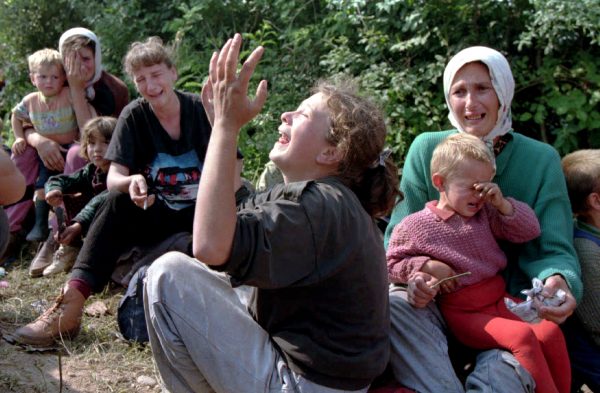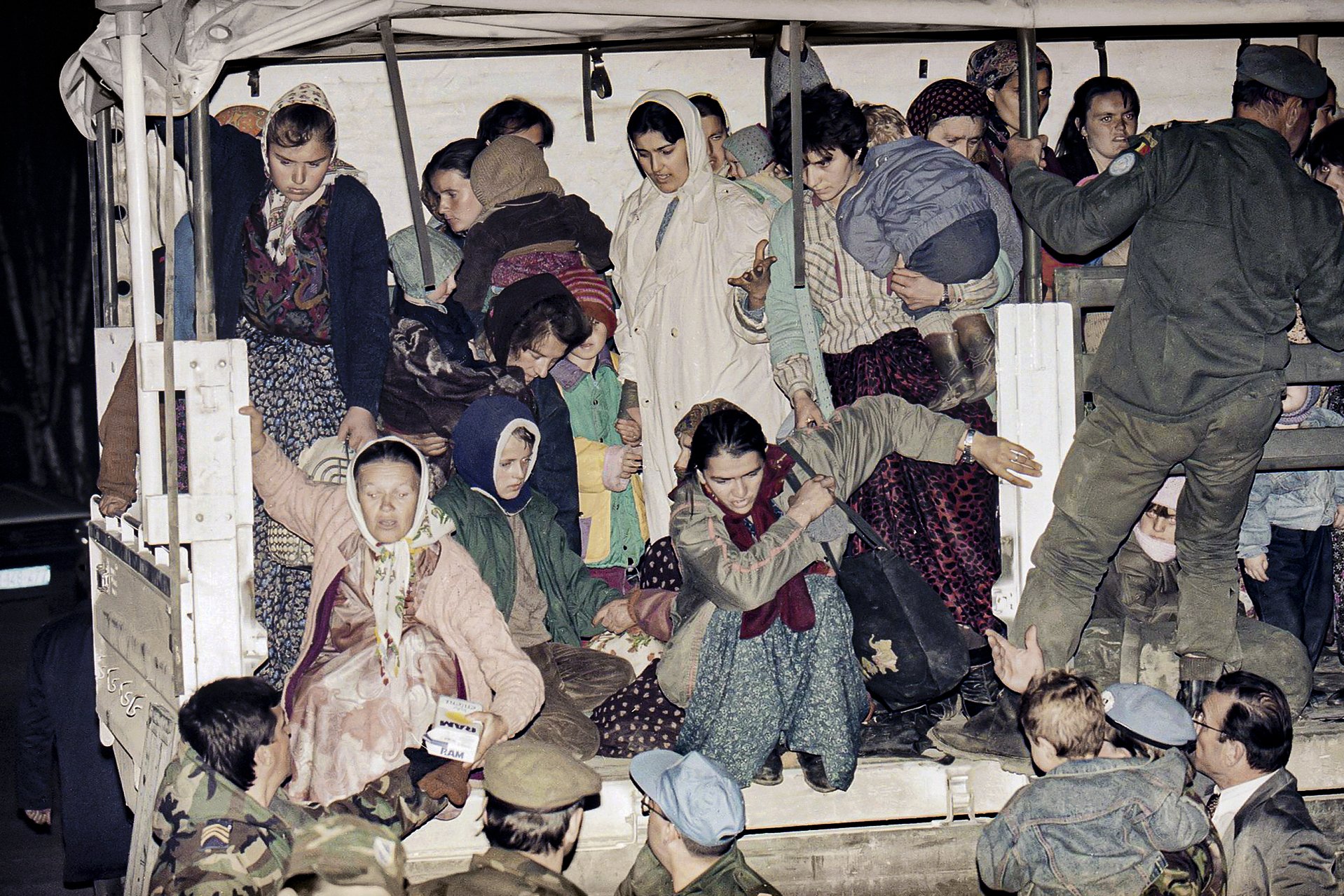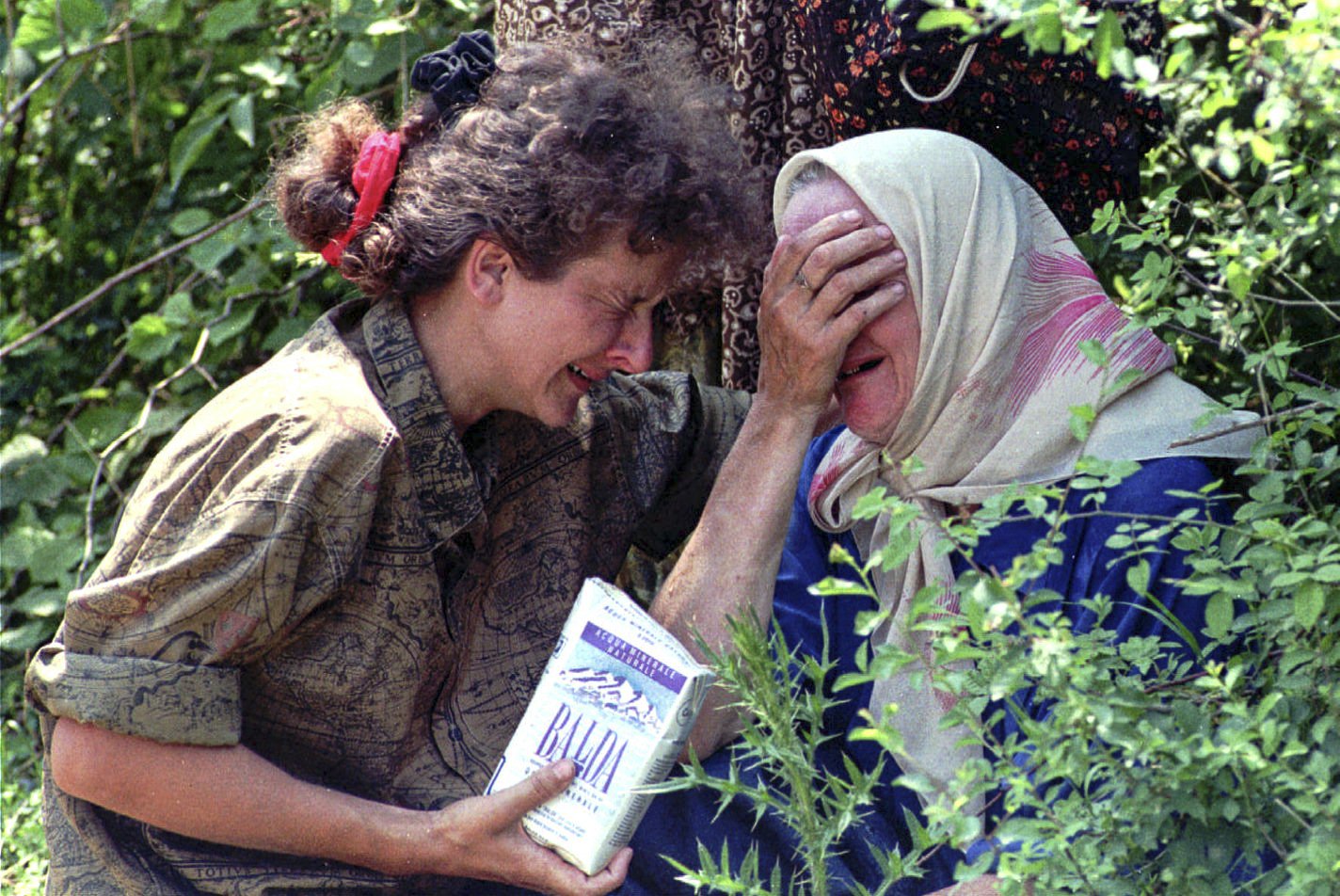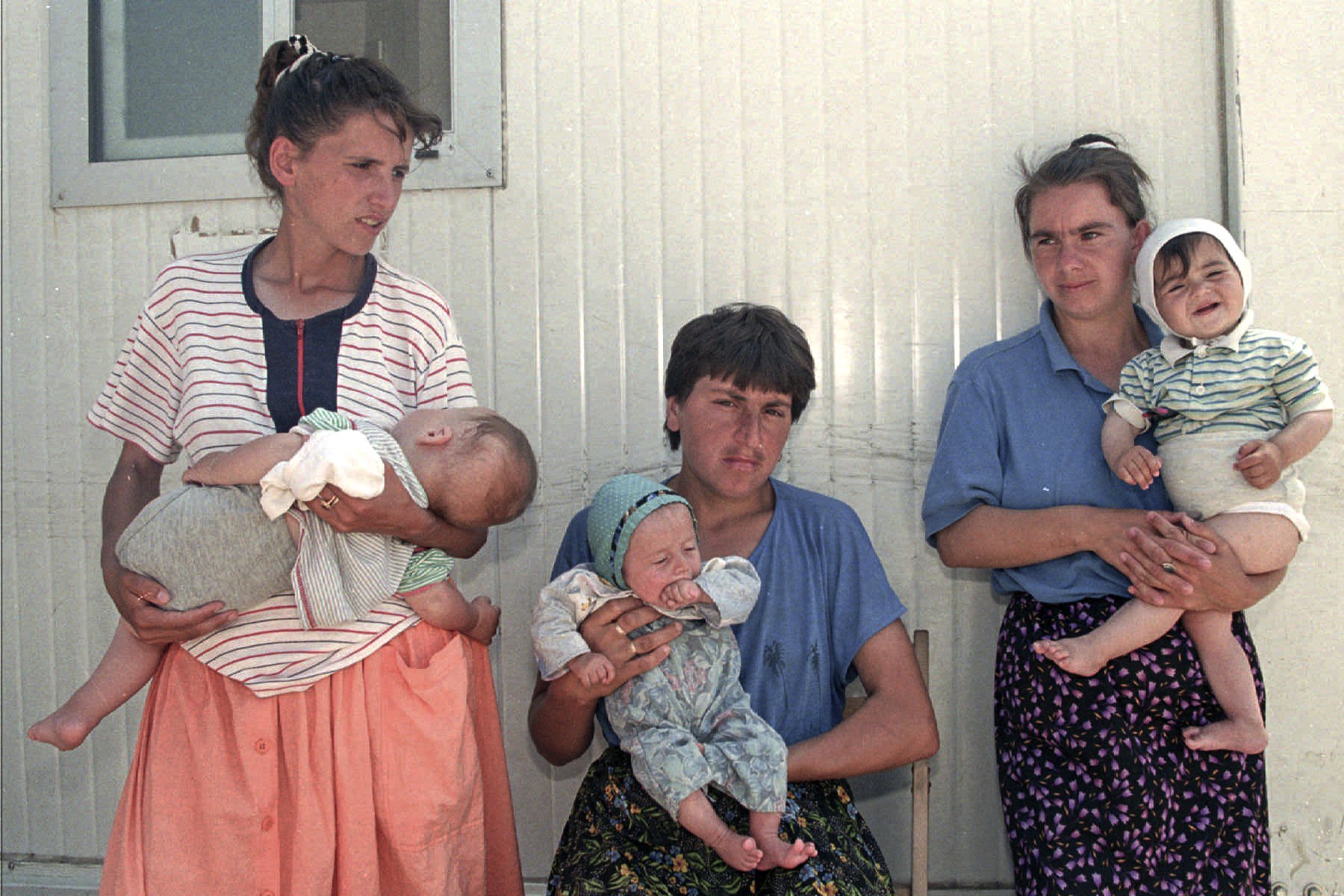 SREBRENICA, Bosnia-Herzegovina (AP) — It’s been 25 years since the slaughter of men and boys in the eastern Bosnian town of Srebrenica, but every year more bodies are found and reburied, and every year the survivors — mostly women — return to commemorate their fathers and brothers, husbands and sons.
SREBRENICA, Bosnia-Herzegovina (AP) — It’s been 25 years since the slaughter of men and boys in the eastern Bosnian town of Srebrenica, but every year more bodies are found and reburied, and every year the survivors — mostly women — return to commemorate their fathers and brothers, husbands and sons.
At least 8,000 mostly Muslim men and boys were chased through woods in and around Srebrenica by Serb troops in what is considered the worst carnage of civilians in Europe since World War II. The slaughter has been confirmed as an act of genocide.
On Saturday, eight newly identified victims of the 1995 massacre will be laid to rest in the memorial cemetery at Potocari, just outside Srebrenica. Among them will be Bajro Salihovic, whose partial remains were unearthed from a mass grave discovered last November and identified through DNA testing.
“They found just a few of his bones, but my mother and I decided to bury him this year so we will know where his grave is, where to go to say a prayer, to find some peace,” said his son Bahrudin, who himself survived the massacre by fleeing through the woods.

Evacuees form Srebrenica look out from a U.N. truck in Medgas, Bosnia, north of Sarajevo, as a U.N. truck convoy carrying people from the besieged Bosnian town made its way to Tuzla, March 20, 1993. (AP Photo/Michel Euler)
The Bosnian war pitted the country’s three main ethnic factions — Serbs, Croats and Bosnian Muslims — against each other after the break-up of Yugoslavia. More than 100,000 people were killed in the conflict before a peace deal was brokered in 1995.
What took place in Srebrenica was a mark of shame for the international community as the town had been declared a U.N. “safe haven” for civilians in 1993.
When Bosnian Serb forces broke through two years later, about 15,000 Bosnian Muslim men and boys fled into the woods. And twice as many terrified residents rushed to the U.N. compound in what was formerly an industrial zone at the entrance to town, in the hope that Dutch U.N. peacekeepers would protect them.
However, the outgunned peacekeepers watched helplessly as Serb troops took around 2,000 men and boys from the compound for execution while bussing the women and girls to Bosnian government-held territory. Meanwhile, in the woods around Srebrenica, Serb soldiers hunted the fleeing Bosniaks, as Bosnian Muslims are otherwise known, killing them one by one.
The killers sought to hide evidence of the genocide, piling most of the bodies into hastily made mass graves, which they subsequently dug up with bulldozers and scattered the bodies across numerous burial sites.
In the years since, bodies have been unearthed and the victims identified through DNA testing. About 1,000 victims remain to be found.
A special U.N. war crimes tribunal in The Hague and courts in the Balkans have sentenced close to 50 Bosnian Serbs, including their top civilian war-time leader, Radovan Karadzic, and his military commander, Ratko Mladic, to more than 700 years in prison for Srebrenica crimes.
And every year, the women return to mourn their dead.

Evacuees from the besieged Muslim enclave of Srebrenica, packed on a truck en route to Tuzla, pass through Tojsici, March 29, 1993. (AP Photo/Michel Euler)

More than 2,000 evacuees from the besieged Muslim enclave of Srebrenica, packed on U.N. trucks en route to Tuzla, halt in Tojsici, March 29, 1993. The evacuation was possible due to a rare ceasefire in the area. (AP Photo/Michel Euler)

More than 2,000 refugees from the besieged Muslim enclave of Srebrenica arrive on a United Nations convoy, in Tuzla, March 29, 1993. (AP Photo/Michel Euler)

Evacuees form the besieged Bosnian town of Srebrenica jump off a U.N. truck after arriving in Tuzla, after a tense journey across the most contested battle lines in Bosnia, March 20, 1993. (AP Photo/Michel Euler)

A wounded child form the besieged Bosnian town of Srebrenica is carried off a U.N. truck upon arriving in Tuzla, Bosnia, after a tense journey across the most contested battle lines in Bosnia, March 20, 1993. (AP Photo/Michel Euler)

A nurse treats a child refugee from Srebrenica with ointment against measles at the refugee camp in Lukavac, Bosnia, March 23, 1993. (AP Photo/Michel Euler)

A woman and her mother, refugees from Srebrenica, cry worried about the fate of the rest of their family, after reaching a U.N. base near Tuzla, Bosnia, July 13, 1995. (AP Photo/Darko Bandic)

Refugees from Srebrenica look through the razor-wire at a UN base, outside Tuzla, July 13, 1995. (AP Photo/Darko Bandic)

Refugees from Srebrenica who had spent the night in the open air, gather outside the U.N. base at Tuzla airport, July 14, 1995. (AP Photo/Darko Bandic)

Refugees and a Bosnian government soldier carry a sick woman on a makeshift stretcher to a hospital inside a U.N. base outside Tuzla, July 13, 1995. (AP Photo/Darko Bandic)

A Bosnian woman reacts after learning from Muslim men who arrived in Tuzla that her husband has been killed by Bosnian Serbs who overran the UN declared safe haven of Srebrenica, July 17, 1995. (AP Photo/Michel Euler)

Ahmed Ustic, 19, one of several thousand Bosnian men who took part in the death march from Srebrenica to Tuzla, kisses a friend in Tuzla, July 19, 1995. (AP Photo/Darko Bandic)

Bosnian refugee women from the area of Srebrenica line up waiting to bathe their babies at the UNICEF baby wash room at the U.N. air base, in Tuzla, Bosnia, July 22, 1995. (AP Photo/Michel Euler)

Bosnian refugee children from Srebrenica, carry loaves of bread, which they received from the United Nations at the refugee camp at Tuzla airport, July 19, 1995. (AP Photo/Michel Euler)

One of four clothed skeletons examined by U.N. investigator Elizabeth Rehn, who is trying to trace an estimated 8,000 Muslim men missing after the Serb conquest of the former Muslim enclave of Srebrenica in July 1995, lies on a hilltop, Feb. 4, 1996. (AP Photo/Alexander Zemlianichenko)

The remains of two bodies and pieces of clothing lie in a field at a suspected mass grave site in the village of Konjevic Polje, approximately 20km (12 miles), north west of Srebrenica, April 2, 1996. (AP Photo/Vadim Ghirda)